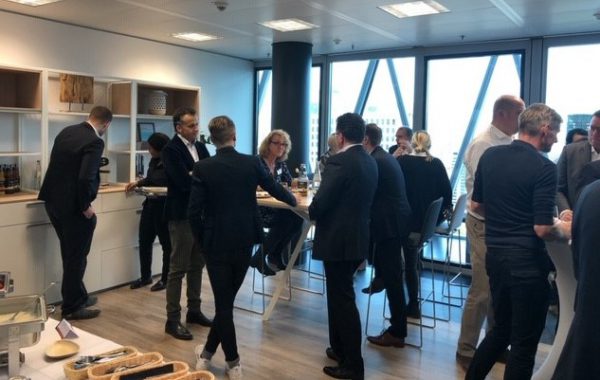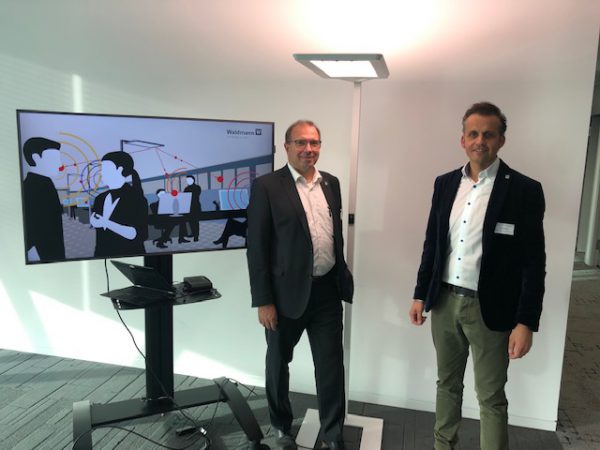November 14, 2019

“What is all feasible – and what of it makes sense?” Based on this question, Manuel Weber, who works as Product Manager Connected Light at our cooperation partner Waldmann, gave us a great insight into digitalization in the lighting sector with his keynote speech on the topic of Sensor Technology and User Data, which started with the advent of the LED in the last century. Today, the LED is the basis for Connected Lightning, i.e. networking in buildings with the help of light. The goal: to use artificial intelligence, valid data and appropriate products to optimize our user behavior and create better lighting solutions and, ultimately, smart digital buildings.

Using concrete examples, Manuel Weber shows us various lighting and usage options with regard to the fully networked workplace. Intelligent systems recognize the respective employee, who can thus easily call up his or her individual settings for table, chair, monitor and lighting at any workstation. In addition, a smart lighting infrastructure can help create digital buildings.
LITX is the name of the new luminaire equipped with the necessary technical know-how, and this Mr. Weber had brought along for us. It is the first prototype of a floor lamp, which has met with great interest among our guests and will be launched on the market next year. It is equipped with additional sensor technology and can, for example, not only measure the air quality as well as the noise level in the office, but also make it visually visible. This is very helpful if it is sometimes too noisy in the area. In addition, the luminaire’s sensor technology is networked with the booking system, so that workstations can be booked depending on specific needs, thus creating dynamic office landscapes.

Dr. Roman Wagner introduces us to the IoT Spot, another extremely smart tool in the field of sensor technology, and demonstrates directly at the workplace how it can be used to very simply design spaces that offer employees flexible solutions. The display attached to each table in the WOW uses colors to provide information on occupation status, while the associated app on the employee’s smartphone shows free seats and the whereabouts of colleagues. In addition, the system provides workstation occupancy information to facility management, making it easier to plan cleaning.
We thank all guests for coming, asking many perceptive questions as well as the stimulating exchange and look forward to the next GREEN LUNCH next year!
Best regards,
Your team from Dr. Wagner & Partner
